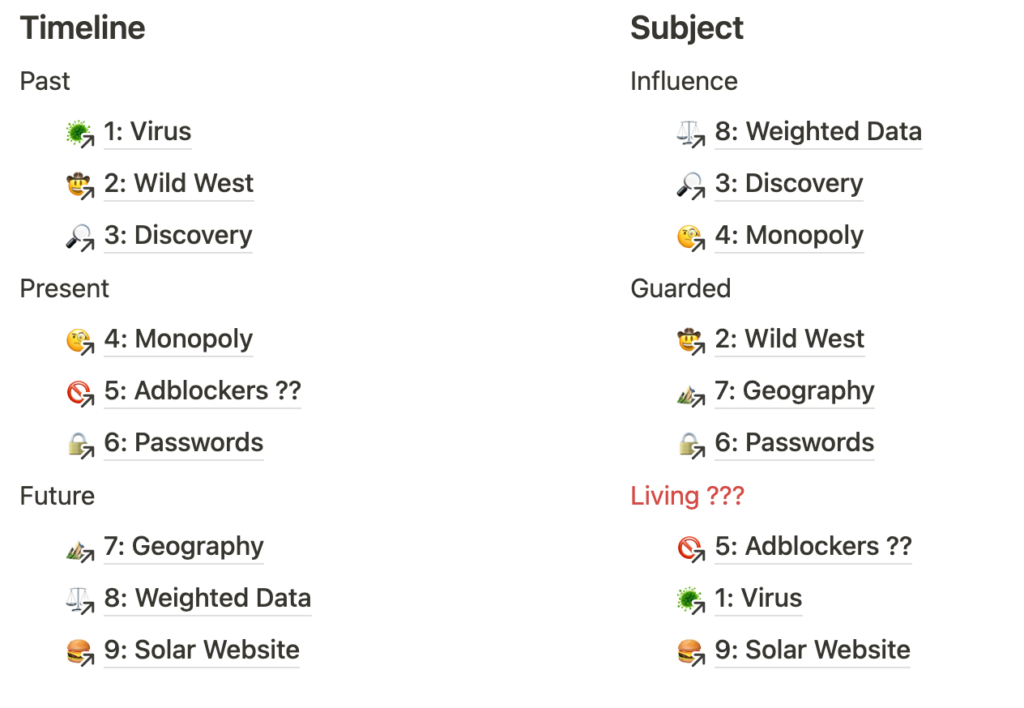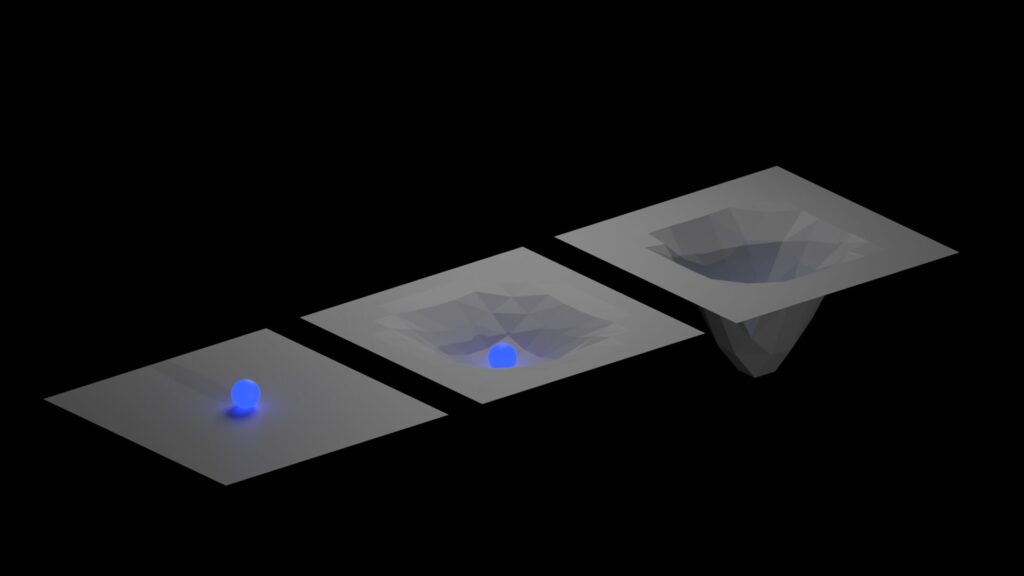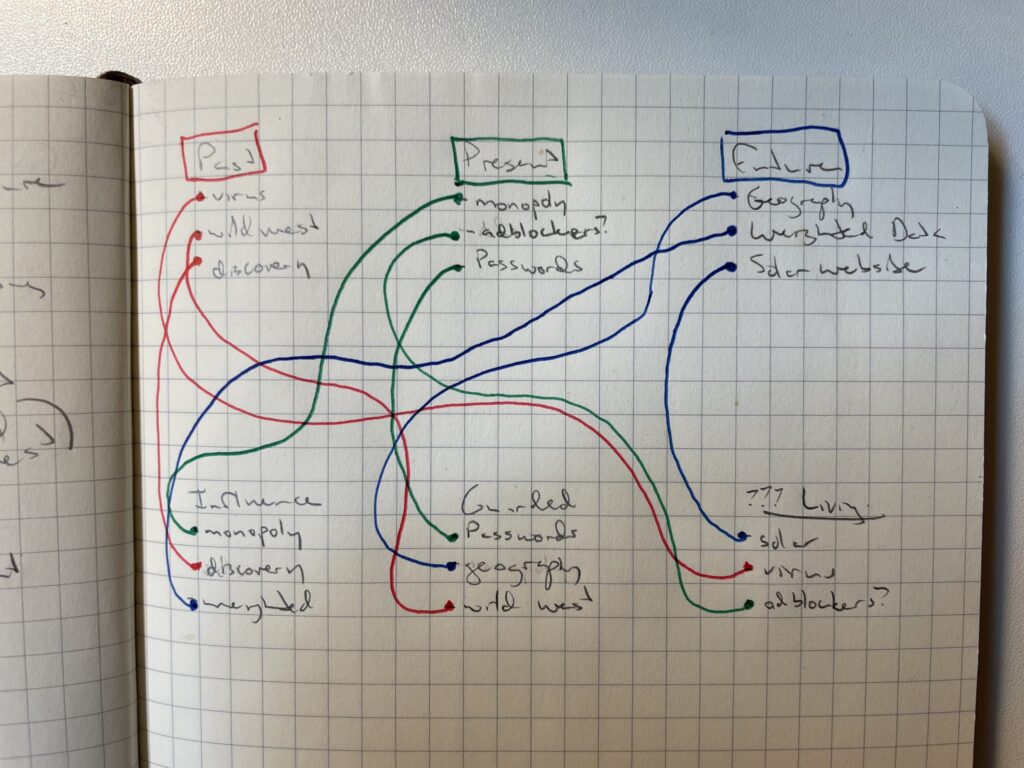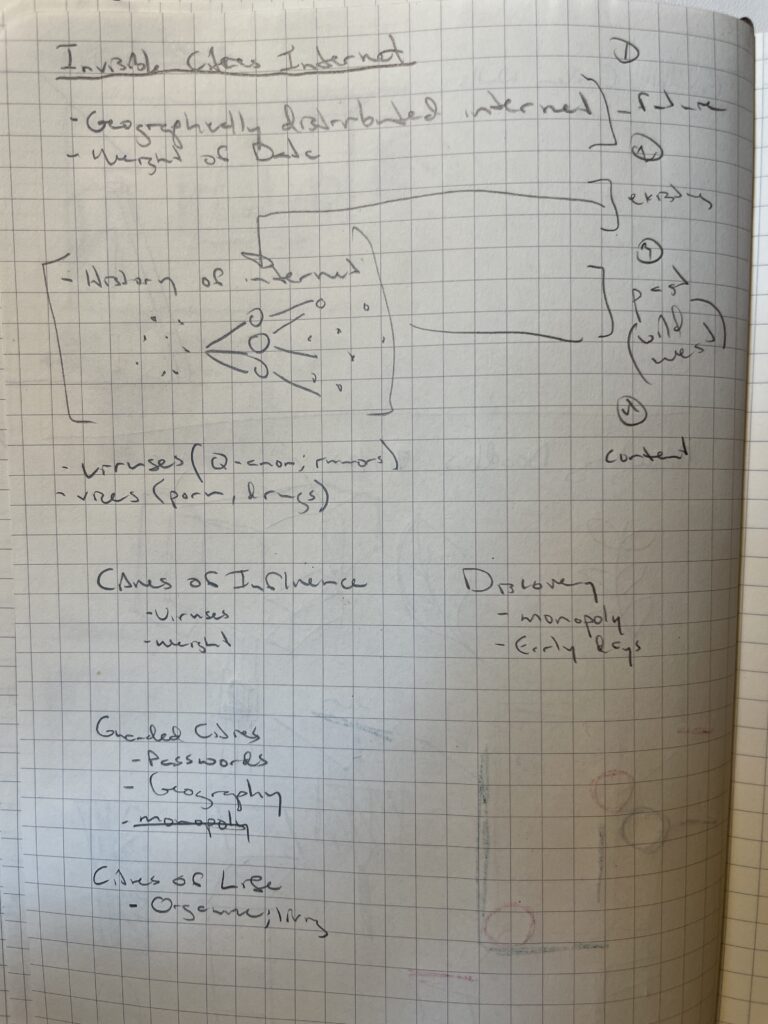A while ago I shared a link to an article about the Dead Internet Theory. I still think it’s applicable, but I also think it could be expanded on.
There is so much talk lately about the consolidation of social media, algorithms, AI, the migration to Bluesky, networks like mastadon, and tons of other things being pushed forward.
I think even with all these, the utility and infrastructure of the internet has been lacking innovation. It really hasn’t changed much since it’s inception with Tim Burners-Lee. I think now is the time to start asking questions about how networks are built, how elements behave, and even the geographic locality of elements. Can the internet become a little bit more based in real life interactions? I know that the expansiveness and lack of walls can be a feature, but are there other technical elements to explore? Can a network be localized? Can it grow organically? I’ve seen projects like this throughout my explorations and will reference them when I can.
This is the first of my posts that’s as rough as I imagined things would first be when starting this blog. I’ll come back and make incremental updates as time goes on, or it’ll stay as just a sketch and an idea forever. Only time will tell.
I started this project a long time ago (and it’d definitely still in progress) after I read Invisible Cities. A fascinating study into the lived experience by Italo Calvino, I highly recommend. That inspired me to write out different stories under various topics about the internet. Some with cities, some narrative, and most with very simple understandings of how technology work.
Eventually I hope to have a full 9 stories organized sort of like this:

But in the meantime here’s where I’m at so far:
Weighted Data

Story:
Draft 1: city in a hole
XXXX was located in a valley, unique to anything on earth. Not only was it surrounded by mountains to the east and west, but to the north, south and every direction in between. Some say it was in a hole. As you arrive at the city, you’re able to see it in it’s entirety, from above. You quickly get an idea of what it is…
Draft 2: people carry their weight
The people of XXX were strange and varied. Varied beyond anything in the rest of the world. Among the tallest were giant, towering over buildings, and the smallest were living in the tiny cracks between bricks. The sizes tended to gravitate towards each other and the city slowly evolved in the same way. the north side of the city was monumental and as you traveled to the south it became smaller and smaller. The large side of the city was known by all, easy to identify with massive towers, immense and jeweled doors paired with opulent clothing that would smother the entire small side of the city (and often did). The small side was more challenging, though more interesting if you were able to navigate your way through it. Filled with even more variety than just scale, you would turn corners and see new colors, styles, smells, and sounds. There were pockets that started to work together and pockets that were separate, but generally the people were welcoming. There were a few dangerous parts that were twisting, dark, dingy, and frightening. The small people kept to themselves, sharing ideas, sharing food and art, but the giants at the north end were always present. Constantly influencing everything they did. The small city knew always of the giant city, but the giant city only used the small city for their abundant population and propensity for busy work.
Technology:
In addition to the distribution and along the lines of making the internet more dynamic that the basic hyperlink markup idea. Is there a way to add weight to ideas. Weight to data. Weight to content. Much in the same way that gravity interacts with space time.
The internet has IP addresses. It’s known where data originates. It’s known who is looking and where they are. Can we use these two attributes to curate what people see. Beyond that, can the weight of the idea become a property. Can something that’s interacted with more start to grow. Start to warp the internet and reach more people. Spread like ideas spread word of mouth. There could be some interesting ways to decide how the “weight” is calculated. Maybe there are different internet lenses. Pure quantity of data, interactions, your network, etc. Do things start to lose weight as time moves on? What aspect of the internet does this apply to? Hashtags, articles, web pages, IP addresses.
Of course there are VPNs. Maybe that’s a way to “travel” in this internet. It starts to relate to the Geographic Impact idea.
The internet has just been this thing. It’s been largely the same since it’s inception. The only thing that’s really changed is visual, back end, and interaction capabilities. But the hardware at the back end hasn’t been innovated or changed to be as dynamic as the initial invention was. Now that everything is connected, let’s disconnect. But in a way that’s more interesting, in a way that changes what people see, in a way that actually has groundings in reality. Something just slightly more interesting.
Geography
Bring back the greek city-state format of the internet
Have people create their community network. A budding connection of internet, that only works in a certain proximity. Something that can be changed when you enter, something that can be studied when you enter. Somewhere to learn about the people around you in a more intimate way. Sharing links only works with the internal network links, inaccessible to the rest of the city-states. But, if you bring messengers, reporters, and other things across the divide that city-state will grow and learn new information and then be distributed to the local group.
Is there something you can do like this? A spatial approach to the internet, that will force us to slow down, that will prohibit globalized group-think. Is the answer to things technology and connection, just in a slightly slower way that’s tied to your geography? Once again, mountain ranges, rivers, and other environmental elements can start to disrupt communities. Once again, effort becomes needed to connect to someone far away. Maybe the expensive long distance call wasn’t such a bad thing in some regards.
Can this be turned into a product? An even based online experience? Something to show art and interact with people, but only there. Can it be used for weddings?
Technology:
Some of the future ones will consider viruses, health, rules, security, and discovery. This is the rough outline for structure and organization (obviously taking inspiration from Invisible cities).
Bonus Sketch Content

